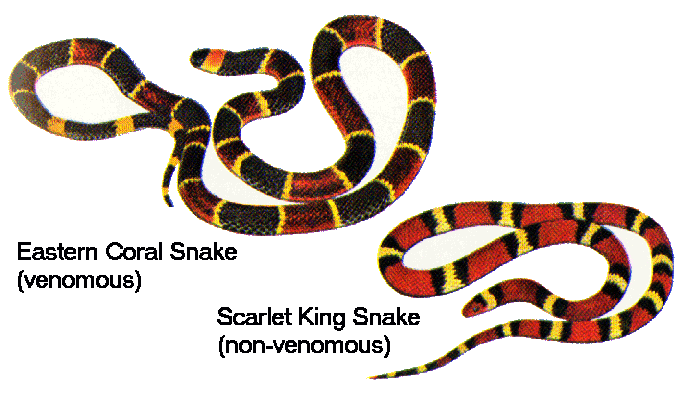The deadliest snakes and spiders of America are just poisonous creatures that nature has equipped with exotic weapons to defend themselves. As our societies have keep growing and building into their natural habitat wildlife, we often come face to face with them in unfriendly encounters.
The poisonous species of our concern are mostly crawlers and slithers that can easily lose their way and find their way into areas that human have populated. Even living in remote areas of America, there is a chance you may confront them. So, it is good to know which snakes and spiders you should be aware and cautious of.
Spiders are not senseless to our presence, but their small size and ability to crawl in small cracks eventually bring them to us. Their bites are always a result of direct contact. Let’s talk about different venomous spiders and snakes frequently found in United States and identify them.
Black Widow
Black Widow spiders are widely spread out in North America, but southern and western parts of the country are more affected. You can easily recognize them from red smudges on sides and under their belly. They can harbor in woodpiles, under eaves, fences, and accumulate heap of trash. They often form webs in the corners of the walls to set trap for the flies.
The bite of a black widow forms two puncture holes, injecting a neurotoxin that causes severe pain, and if not treated in time it can also cause death in small children.
Brown Recluse Spiders
AKA violin spider is dominant in Midwestern and Southern areas. It can be identified through its brown color and the violin like body shape (especially note the head with fiddled marking) that is evident from the top. Unlike most spiders, it bears six eyes instead of eight. The brown recluse spider hides itself in dry and dark crevices of the buildings, which can also include your closet, jackets and shoes.
The bitten spot swells up and forms lesion, which hurts a lot and progressively turns into a malignant blister. An immediate medical attention is required, otherwise the condition may aggravate. Here is a picture timeline of a Brown Recluse spider bite throughout the healing process… (click here)
Hobo Spiders
Mostly seen in Northwestern states, the Hobo Spiders are brown in color, large and scary. There are many other similar shaped and sized spiders, but you can distinguish Hobos by observing distinct pattern of yellow markings on their abdomen. Also unlike other similar species, they lack dark bands on their legs. It’s bit less severe than the above two but eventually needs treatment.
Never steep on a spiders. You could be stepping on a female with eggs and they’ll stick to your shoes and hatch all over your house.

Let’s talk about snakes in the US.
Snakes
Snakes are never aggressive until they are pried on. They can go unnoticed right under our feet and unfortunately get squeezed sometimes, for which they inevitably take their revenge. A snake’s venom is more deadly than spider’s poison.
Copperheads
These snakes are found across Eastern and Western states. The color is usually reddish to golden and they have characteristic hourglass-shaped bands on their body. The mature Copperheads can be 18–36 inches in length. Copperheads live in places like forests, rocky areas, swamps, or near water sources such as rivers.
Cotton Mouth
Geographically, they are more common in southeastern parts of the country. Cotton Mouth snakes can be recognized by the distinct shape of their head. Color-wise, they can vary from dark to dark brown with associated crossbands of the same color. They can be as long as 50-55 inches and are found near water reservoirs. They are stubborn and can attack if you try to threaten them.
Coral Snakes
Mostly found in Southern States, they can be easily confused with non-venomous king snakes, but you can differentiate between them by cross referencing red bands with yellow bands. In king snakes red bands never touch the yellow bands. Venomous Coral snakes take leaf piles for their retreat or the deep burrows in the ground.

Rattlesnakes
Rattlesnakes are predators that live in a wide array of habitats and prefer to hunt small animals such as birds and rodents. They kill their prey with a venomous bite, rather than by constricting. All rattlesnakes possess a set of fangs with which they inject large quantities of hemotoxic venom. The venom travels through the bloodstream, destroying tissue and causing swelling, internal bleeding, and intense pain.
Rattlesnakes will warn humans and predators to stay away by the loud shaking of the titular noisemaker (“rattle”) at the end of their tails.
Rattlesnake bites are the leading cause of snakebite injuries in North America. However, rattlesnakes rarely bite unless provoked or threatened and if treated promptly, the bites are rarely fatal.
Today, you have learned about the deadliest snakes and spiders in America. Visit here to find information on state-specific snakes and check this for venomous spiders in the US. Remember that spiders aren’t hard to kill, but handling snakes is a job of experts. If you encounter a snake, unless you have proper skills to train them, you’d better call professionals.
Always seek medical attention for any spider or snake bites.


